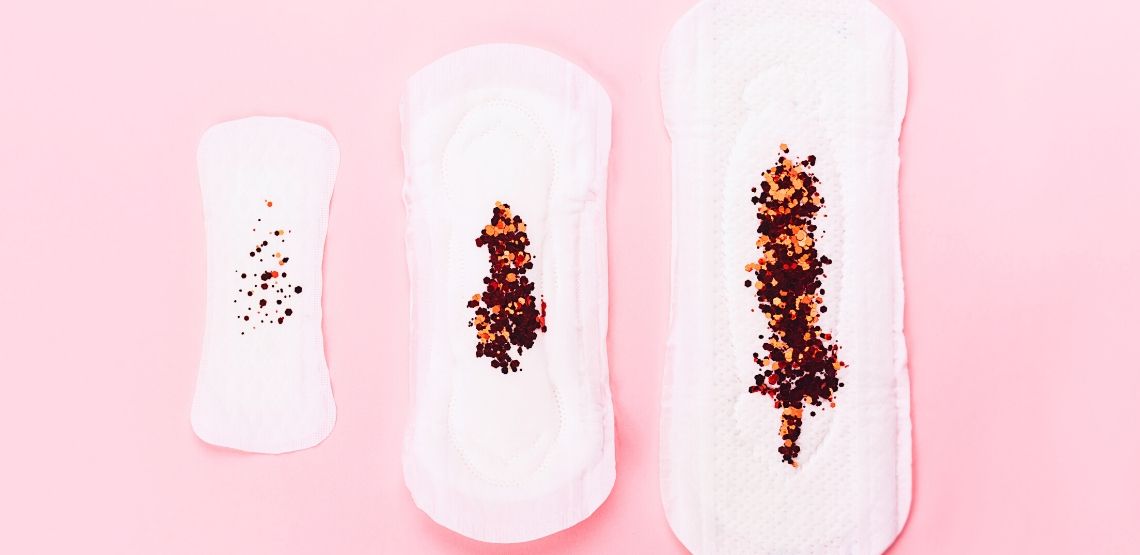Different Types of Vaginal Discharge
All women experience vaginal discharge; it is perfectly normal. Throughout your menstrual cycle, discharge colour and consistency will vary, however, there are certain types of vaginal discharge to watch out for that will alert you to a health issue. When it comes to vaginal discharge, what is and is not normal?
What is Vaginal Discharge?
Vaginal discharge is fluid or mucus that comes from the vagina. When the egg releases during ovulation, your vagina produces a lot of mucus. Vaginal discharge forms from the normal bacteria and fluids of the vaginal cells, which is released by the glands in the vagina and cervix. The purpose of discharge is to help protect the vaginal and urinary tract against infections and provide lubrication to vaginal tissues. The fluid carries dead cells and bacteria out of the body to keep the vagina clean. Normal discharge changes based on ovulation, menstrual flow, sexual activity and birth control. The amount of discharge may be influenced by pregnancy, menopause, birth control pills, the patch, or vaginal ring.
Normal Discharge
Normal discharge ranges in color from clear to milky white. It is normal to have about a teaspoon of discharge a day and should be mostly odorless. If discharge is clear and stretchy, it is likely fertile mucus that indicates that you are ovulating. Clear and watery discharge occurs throughout your cycle and can be particularly heavy after exercise. If your discharge is clear to white and you have no other symptoms, your discharge is normal.
Abnormal Discharge
If the color, smell, or texture of vaginal discharge changes, keep an eye on the problem and consult a doctor if required. If the color of your discharge changes from white, something is abnormal. A foul or fishy smell is a sign of infection.
Causes of Abnormal Discharge
Some reasons that your discharge has changed can include:
- Vaginal infection
- Sexually Transmitted Infection (STI)
- Reaction to a foreign body like a tampon or substance like spermicide
- Changes that occur after menopause
- Pelvic Inflammatory Disease (PID)
- Cervical Cancer
Pay Attention to Discharge Color
Discharge color can tell you a lot about what is going on in your body. Below are colors that indicate that your discharge is abnormal.
Thick, White Discharge
Generally, white discharge is normal. If it comes with symptoms like itching, burning, redness, or irritation, it may be a yeast infection. Yeast infection discharge has a curd-like cheese texture caused by an overgrowth of fungus in the vagina. These infections are relatively common and about 90% of women will get a yeast infection at some point in their lifetime. Yeast infections are not contagious and usually are easily cleared up with over the counter (OTC) antifungal creams. See a doctor if symptoms do not improve with antifungal cream or you get more than four yeast infections in a year
Greyish Discharge
If the colour changes into a grey hue, you notice an increase in discharge and it comes with a fishy odor, you may have bacterial vaginosis. It is caused by an overgrowth of bacteria naturally found in your vagina. With this inflammation, discharge will be thin and may be paired with itching or burning during urination. Bacterial vaginosis is the most common cause of vaginal discharge; it is an infection that affects about 30% of women of child-bearing age.
Related Search Topics (Ads)
Yellow or Green Discharge
If you have yellow or green discharge you may notice a foul odor with it. These discharge colors may be a sign of a bacterial infection or STI. With infection, discharge may take on a frothy texture and thick as the infection advances. Two common ailments associated with yellow or green discharge are:
- Desquamative inflammatory vaginitis (DIV). This is more often found in post-menopausal women whose estrogen levels have diminished. The vagina atrophies when the vaginal wall things out, which makes it red and inflamed.
- Trichomoniasis. This is an STI that comes with itching, burning, soreness, redness and pain during urination or intercourse. Most of those infected with Trichomoniasis do not notice symptoms, but it will require antibiotics to clear up.
Brown discharge
Brown discharge is an indication of irregular period cycles. It may not be anything to worry about. It is likely the result of your vagina cleaning out old blood—which appears brown. If brown discharge appears on an ongoing basis, it could be a sign of uterine or cervical cancer. If this is the case, make an appointment to consult with your doctor for a health exam.
No Discharge
If you have little or no vaginal discharge, it may be because your estrogen levels have dropped due to:
- Medical treatment of breast cancer, endometriosis, fibroids, or infertility
- Surgery to remove the ovaries
- Radiation treatment to the pelvic area
- Chemotherapy
- Severe stress, depression, or intense exercise
When to See a Doctor
If your discharge is not a yeast infection and is an abnormal color, you will want a medical opinion. The only way to determine if discharge is normal or not is by an examination. If discharge comes with any of the following, you will also want to schedule an appointment:
- pain, itching, discomfort, rash, or sores in or around the vagina
- Bad odor
- Pain with intercourse or urination
- Abdominal or pelvic pain
The doctor will ask about the color, consistency and smell of the discharge during your appointment. They will also need to know if you are experiencing any itching and will need to determine whether it is the result of sex or your menstrual cycle.
Healthy Practices
There are some things you can do to keep your vagina clean and healthy:
- Wash vagina with water or non-soap cleanser and use warm water
- Do not use a washcloth to clean yourself
- Do not douche or use feminine hygiene products
- Avoid hot baths and scented bath products
- Wear cotton underwear
- Rinse genitals with water and pat dry after using the washroom
- Do not use baby wipes or scented toilet paper
When you notice that your vaginal discharge has changed, pay attention to the signs from your body. Color, odor and texture will help tip you off to other health issues that you should have checked out.
Article Resources
- Cleveland Clinic (How to Decode Your Vaginal Discharge – and When to Worry)
- Unity Point Health (5 Types of Vaginal Discharge)
- Sutter Health (Vaginal Discharge)
- Uptodate.com (Patient Education: Vaginal Discharge in Adult Women (Beyond the Basics)
- Mayo Clinic (Symptoms Vaginal Discharge)
- Letsgetchecked.com (Green Vaginal Discharge: Dr. Rowley Explains What it Means)


